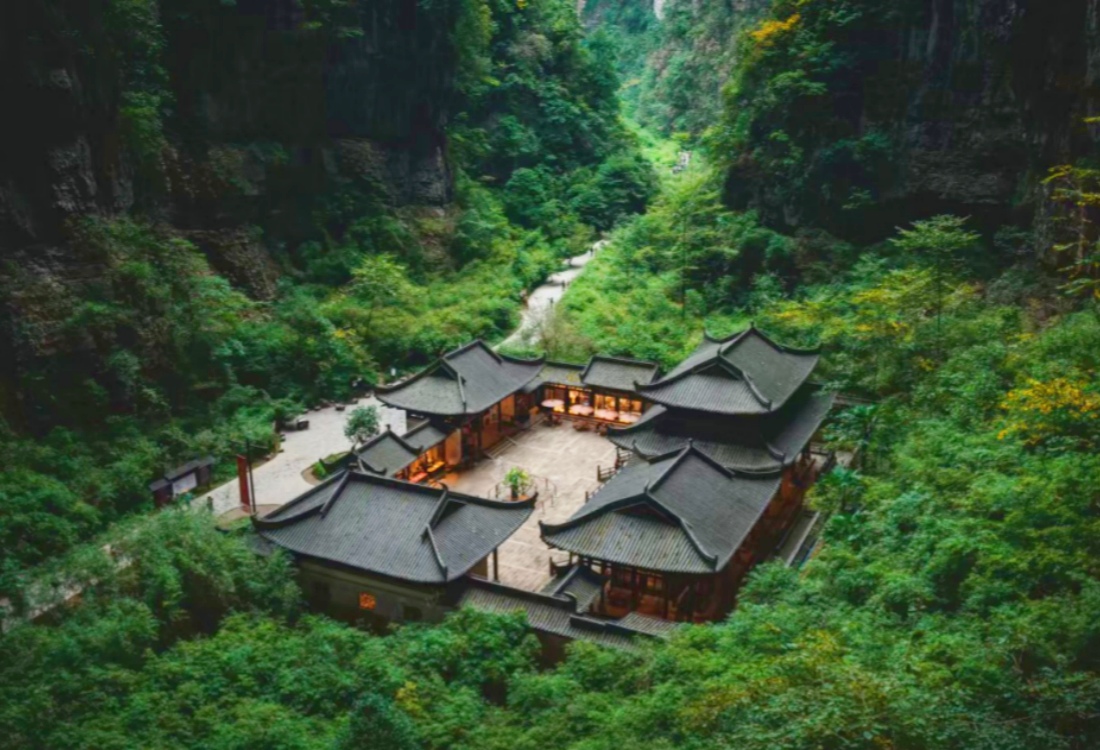Table of Contents
ToggleIntroduction: Why Chongqing is Called the Mountain City
Chongqing, a major metropolis in southwestern China, is often referred to as the “Mountain City” (山城). Nestled at the confluence of the Yangtze and Jialing Rivers and surrounded by undulating hills, Chongqing is one of China’s most geographically unique cities. Its dramatic terrain of steep slopes, towering hills, and layered urban development has shaped its architecture, transportation, and local culture in extraordinary ways. This natural elevation gives Chongqing a striking skyline and a reputation for being both beautiful and complex to navigate.
Urban Architecture Built Into the Mountains
Chongqing’s urban design is defined by its mountainous landscape. Skyscrapers rise from the hills, and buildings are often stacked on different levels, giving the city a vertical feel unlike anywhere else in China. Roads intertwine over multiple levels, and it’s not uncommon to see highways running through buildings or elevators connecting entire streets. One famous example is the Liziba Metro Station, where the train line travels directly through a residential building—an iconic symbol of Chongqing’s mountain city charm that has gone viral globally.
Mountain Roads, Bridges, and Unique Transportation
Getting around in Chongqing is an adventure in itself. The city boasts numerous bridges, tunnels, and multi-tiered roads that snake through the mountains. Known for its “8D magic terrain”, Chongqing’s navigation system challenges GPS, with streets sometimes stacked on top of one another. The Yangtze River Cableway, a historic aerial tramway, offers breathtaking views and is a must-try for first-time visitors, giving a bird’s-eye view of Chongqing’s mountainous beauty. The city’s light rail system, especially Line 2, also showcases stunning cliffside views as it weaves through the hills and valleys.
Scenic Spots in Chongqing’s Mountain Landscape
Chongqing’s natural terrain gives rise to some of the most stunning mountain attractions in China.
- Eling Park (鹅岭公园): Located on a hilltop, this park offers panoramic views of the entire city, especially during sunrise or sunset.
- Nanshan Mountain: Ideal for hiking and scenic viewpoints, it’s home to a famous tree-covered observation deck and the One Tree Pavilion (一棵树), perfect for night views.
- Wulong Karst National Geology Park: A UNESCO World Heritage Site located just outside the city, featuring dramatic stone bridges, sinkholes, and caves that reflect Chongqing’s rugged geology.
How Chongqing’s Mountain Terrain Shapes Its Culture
The unique topography of Chongqing has deeply influenced the local lifestyle and culture. Residents are known for their endurance and adaptability, often walking up and down hundreds of steps daily. Traditional “ladder streets” (梯道) are a cultural remnant—stone stairways carved into hillsides that still serve as pedestrian routes today. The spicy, bold flavors of Chongqing hotpot are said to match the intensity and energy required to live in such a vertically challenging city.
Discover the Layers of Chongqing
As China’s ultimate mountain city, Chongqing offers a rare combination of natural beauty, urban innovation, and cultural depth. Whether you’re riding a train through a skyscraper, exploring centuries-old ladder streets, or admiring the mountain views from a rooftop café, Chongqing delivers a travel experience like no other. For adventurers, urban explorers, and culture lovers alike, Chongqing is a city that climbs into your heart—one level at a time.









